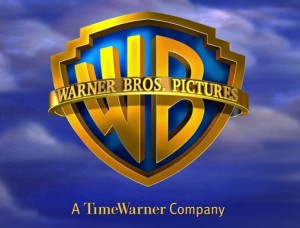
By
Rob ScottApril 25, 2011
Artefact asks “What’s next in digital camera design?” with an interesting new prototype called the WVIL (Wireless Viewfinder Interchangeable Lens). According to the Artefact site: “The patent-pending WVIL system takes the connectivity and application platform capabilities of today’s smart phones and wirelessly connects them with interchangeable full SLR-quality optics. It is the inevitable solution for photographers who expect the power of modern mobile devices but who also demand uncompromised quality.”
 In an article that features two compelling videos, Fast Company’s Co. Design suggests the WVIL provides a possible glimpse at the future of photography if digital cameras and cellphone cameras continue to merge, “leaving just a lens with a chip and a screen on the back of it.”
In an article that features two compelling videos, Fast Company’s Co. Design suggests the WVIL provides a possible glimpse at the future of photography if digital cameras and cellphone cameras continue to merge, “leaving just a lens with a chip and a screen on the back of it.”
Artefact explains that many possibilities stem from this idea. According to Markus Wierzoch, WVIL’s lead industrial designer: “With the first digital cameras, the industry was quick to replace the medium, film, with a sensor, but the rest stayed the same. But modern connectivity opens up a lot of different options, like being able to detach the lens from the viewfinder. What if you could go to a party, mount three or four lenses all over the room, and control them all wirelessly with one ‘camera’?”
The Artefact team has cleverly redesigned the digital camera as “a camera operating system,” one that can be controlled from a touchscreen-based viewfinder and could quite possibly appeal to prosumer photographers who have outgrown their traditional DSLRs and no longer want a bag full of expensive gear. Artefact believes the WVIL could become a reality within three years.

By
Rob ScottApril 25, 2011
As part of the next step toward streamlining the film and television production workflow, Sample Digital and Technicolor have introduced apps that enable executives to view “dailies” on their iPads. According to the Los Angeles Times, the apps provide production execs around-the-clock mobile access to daily footage, scripts, visual-effects shots and trailers.
 “Until a few years ago, dailies from shoots were typically stored on DVDs and then shipped to various locations, a process that became more costly as production increasingly moved out of Hollywood and projects took on multiple financing partners. More recently, dailies are delivered online and accessible on PCs and laptops, which aren’t as easy to lug around as a tablet.”
“Until a few years ago, dailies from shoots were typically stored on DVDs and then shipped to various locations, a process that became more costly as production increasingly moved out of Hollywood and projects took on multiple financing partners. More recently, dailies are delivered online and accessible on PCs and laptops, which aren’t as easy to lug around as a tablet.”
The dax|Mobile app from Sample Digital costs $249.99 on the iTunes store, while the subscription-based digital workflow system runs $1,250 to $2,000 per TV episode and up to $15,000 per movie. Encryption for the streaming video to prevent illegal copying is available for an additional fee.
Additionally, Technicolor has teamed with PureBlend Software Design Group to offer the Technicolor MovieSlate on-location production app that works for both Android and iOS systems to provide access to dailies and other content.
By
Rob ScottApril 22, 2011
HBO announced that its streaming service HBO GO will soon offer more than 1,400 titles for streaming via iPads, laptops and smartphones. According to the press release: “HBO subscribers can instantly watch every episode of classics like The Sopranos, Sex and the City and Deadwood and current award-winning series like Boardwalk Empire, Entourage and True Blood as well as blockbuster theatricals – where they want, when they want.”
HBO made its announcement with a YouTube video posted last week. The service will be available for iOS and Android devices.
The HBO promotional video suggests May 2nd as a launch date. The press release specifies that HBO GO will be available to HBO subscribers through Comcast XFINITY TV, Verizon FiOS, Cox Advanced TV and AT&T U-Verse customers. Surprisingly, Time Warner Cable is not currently included in the list of providers (HBO is owned by Time Warner).
HBO was in the news earlier in the year after senior vice president of corporate affairs, Jeff Cusson told The Hollywood Reporter that HBO “has no intention of making its content available for streaming on Netflix,” adding that the company “believes in content exclusivity, especially for high-value content.” It looks like the new capabilities of HBO GO support that strategy.
Related CNET story: “HBO Go teased for iPad, iPhone, Android” (4/19/11)
Related Gizmodo post: “HBO Go Will Bring Every Episode of All Their Shows to iOS and Android” (4/19/11)

By
Rob ScottApril 21, 2011
According to Business Insider, “kids are leading the world’s transition to digital media” — and if we want to stay in step with the latest (or emerging) media consumption trends, we’ll need to pay close attention to what children are doing. The Kaiser Family Foundation has released the results of a comprehensive survey of more than 2,000 families. The report features some compelling information regarding the media consumption habits of 8-18 year olds — in addition to some pattern changes that have evolved since 1999.
 The survey indicates a number of interesting trends that may impact the future of media delivery, such as: TVs remain on during meals in 2/3 of households, TVs are on when no one is actively watching them in 3/4 of households, only 1/3 of households have media-consumption rules, and more than 70 percent of kids have TVs in their bedrooms.
The survey indicates a number of interesting trends that may impact the future of media delivery, such as: TVs remain on during meals in 2/3 of households, TVs are on when no one is actively watching them in 3/4 of households, only 1/3 of households have media-consumption rules, and more than 70 percent of kids have TVs in their bedrooms.
Not surprisingly, children are consuming less print media and much more digital media (and they are increasingly consuming multiple forms of media simultaneously).
Additional statistics:
- TV viewing by platform in a typical day: Live TV (59%), Mobile (12%), DVD (12%), Online (9%), On Demand/DVR (8%).
- Recreational computer time in a typical day: Social Networking (25%), Playing Games (19%), Video Sites (16%), Instant Messaging (13%), Email (6%).
- Music consumption by platform in a typical day: 29 percent iPod, 23 percent Computer, 23 percent Radio, 12 percent CD, 12 percent Cell Phone.
Click here to access the complete Kaiser Family Foundation report and related information including a news release, podcast, webcast and more.
Click here to flip through the Kaiser Family Foundation slide presentation of charts and related information posted by Business Insider.
By
Rob ScottApril 21, 2011
We recently reported that a new premium VOD service from DirecTV was in the works that would make movies available in the home shortly after their theatrical release. The Hollywood Reporter now says 23 industry leaders — including Peter Jackson, James Cameron, Michael Bay, Michael Mann and Kathryn Bigelow — have thrown their support behind the National Association of Theatre Owners (NATO) by signing an open letter in opposition of the new distribution model.
NATO is running the letter this week in Variety at the same time the new VOD service — dubbed Home Premiere — is launched (the first available title will be Sony’s “Just Go With It”). According to DirecTV, new movie releases will be available in 1080p HD for $29.99, months before they are available on Netflix, DVD or Blu-ray. THR reports that theater owners are threatened by this proposal and what they see as a disruption to a proven distribution model. The directors and producers who signed NATO’s letter do not believe a premium VOD service will solve slumping DVD sales, and could negatively impact the platform release patterns of specialty films and lead to additional piracy issues.
“As a crucial part of a business that last year grossed close to $32 billion in worldwide theatrical ticket sales,” the letter states, “we in the creative community feel that now is the time for studios and cable companies to acknowledge that a release pattern for premium video-on-demand that invades the current theatrical window could irrevocably harm the financial model of our film industry.”
Related THR story: “7 Key Questions Surrounding DirecTV’s Premium VOD Service Controversy” (4/19/11)
Related Bloomberg story: “DirecTV Starts Premium Film Rentals at $29.99 for 48 Hours” (4/19/11)

By
Rob ScottApril 20, 2011
IPTV News interviews Vassilis Seferidis, director of business development at Samsung Electronics, in this interesting article regarding the direction of 3D TV. Based on recent market growth and the update of 3D TV channel subscriptions, Seferidis believes consumers have no hesitation in enthusiastically adopting 3D TV. He adds that the fundamental obstacle in moving forward at this point is the availability of 3D content.
In terms of technological progress at Samsung, Seferidis comments, “For our 2011 TV line-up we have introduced a series of 3D TV innovations including: new lightweight active 3D glasses with better shutter synchronization for better separation of the two stereo channels; wireless (induction-based) re-charging station for 3D glasses; the ability to add prescription inserts to your 3D glasses (similar to those used in diving goggles); and improved processing of the 3D video signal on the TV panel for a better separation and presentation of each stereo channel.”
Seferidis is slated to deliver a presentation in mid-May at the 3DTV World Forum in London’s Thistle Marble Arch Hotel.

By
Rob ScottApril 19, 2011
According to Flickr’s “camera finder” feature, the iPhone 4 is heading towards becoming the most popular “camera” used to submit images to the photo-sharing site. Is the iPhone (and other smartphones with improved camera features) disrupting the point-and-shoot market?
Flickr’s camera finder provides a graph detailing the most popular cameras in the Flickr community, with the Nikon D90 currently at the top. However, the iPhone 4 is on the rise, while traditional point-and-shoot cameras are steadily declining. If the trend continues, the iPhone is poised to take the lead in the near future.
This isn’t the first time a phone may prove more popular than a traditional camera on Flickr. PC World reports that in August 2009, the iPhone edged by the Canon Digital Rebel XTi as the most popular (back when the best iPhone camera only featured 3.2-megapixel resolution).
We recently reported that Cisco had shut down production on the popular Flip camera line, possibly in response to smartphones’ ability to shoot HD video. Is the iPhone still proving disruptive, four years after its initial release? According to GigaOM: “The takeaway is that smartphones are nearing the tipping point in terms of camera quality when it comes to the needs of most average users (professional and prosumer DSLRs continue to do well), and the iPhone 4 is leading that charge. Phones provide a much more convenient on-hand camera experience than do dedicated devices, and the trade-offs in terms of quality and feature are becoming less significant all the time.”
Related PC World story: “iPhone 4 About to Be Most Popular Camera on Flickr” (4/18/11)

By
Rob ScottApril 17, 2011
The nation’s No.1 and No. 2 satellite TV providers may be looking for new ways to provide movies to consumers. Dish Network (No. 2) recently purchased the assets of bankrupt Blockbuster for $320 million and may use the company’s online streaming service to take on video rental enterprises such as Netflix.
Meanwhile, DirecTV (No.1) is reportedly in talks with Hollywood studios regarding a new movie rental service that would provide $30 rentals just two months after films’ theatrical releases. Studios that are looking to combat slumping DVD sales believe that some consumers, especially families, may be willing to pay the higher fee for access to titles prior to their availability on DVD or from services such as Netflix.
Analysts explain that movie studios are open to new online streaming or pay-per-view models in order to recoup revenue from declining DVD purchases. We may also see $30 premium movie-on-demand offerings from cable firms such as Comcast and Time Warner Cable.
Related TVPredictions.com post: “DirecTV to Offer $30 VOD Next Week?” (4/15/11)
Related Engadget post: “DirecTV, Comcast, Vudu could start offering premium VOD $30 movie rentals in April” (3/31/11)

By
Rob ScottApril 17, 2011
Warner Brothers plans to release a new app by this summer code-named “Digital Everywhere.” The studio hopes the app will serve as the ultimate destination for purchasing all digital movies, not just those produced by Warner Bros. According to CNBC, “The way iTunes changed music, Warner Brothers wants to change movies.”
 Digital Everywhere is not a retailer like iTunes. It gathers the many ways a consumer can rent or purchase movies and organizes an individual’s library of movie titles and TV programs. It then provides access to this library from any Internet-connected device through the cloud authentication system known as UltraViolet.
Digital Everywhere is not a retailer like iTunes. It gathers the many ways a consumer can rent or purchase movies and organizes an individual’s library of movie titles and TV programs. It then provides access to this library from any Internet-connected device through the cloud authentication system known as UltraViolet.
The app does much more than serve as a content aggregator — and intends to increase the value of a digital movie purchase by including features such as: trailers, clips, reviews, related articles, data from IMDb and Box Office Mojo, release schedules, recommendations and Facebook integration. CNBC reports that Digital Everywhere, “brings DVDs, the movies on a hard drive, digital films from iTunes, Netflix queues, and eventually digital Amazon purchases, into one easily-sortable library.”
If the Warner Bros. app delivers all that it promises, and movie fans respond to the cloud integration approach, we could be on the cusp of experiencing a significant change in how we access and manage our digital media.

By
Rob ScottApril 15, 2011
The movie karaoke game, Yoostar 2 is designed to put players in scenes from their favorite movies and TV shows, enabling them to “perform” with professional actors. Users can then post the resulting video clips on the Yoostar web site, or social networking sites such as Facebook and Myspace. Yoostar 2 for the Xbox 360 Kinect and PlayStation Move was released last month.
 The connectivity between gaming and social networking could mark the first step toward an experiment that might soften the tension amongst developers in the two arenas.
The connectivity between gaming and social networking could mark the first step toward an experiment that might soften the tension amongst developers in the two arenas.
Scott Steinberg writes in a Mashable post: “You can seamlessly upload video performances online via PlayStation Network or Xbox Live right to social networks, where others can vote, bestow Internet fame and follow your antics. Using the service, it’s not only possible to share viral videos of you doing your best impression of Marlon Brando in ‘The Godfather’ via Facebook and Twitter. You can also earn rewards that unlock content in the disc-based console versions of the game.”
In an era where major game publishers tend to categorize social games into standalone experiences, Yoostar 2 may represent “one of the first efforts to bridge the gap between devices and platforms.”
Steinberg provides an interesting six-minute video report from the Yoostar offices in Santa Monica, California that includes interviews, demos and footage from the game, and of particular interest, the technology used to eliminate the need for green screen.

By
Rob ScottApril 15, 2011
Adobe previewed its new video streaming technology at NAB, built on the Adobe Flash Media Server. The new features and capabilities are designed to help stream protected video to mobile devices such as the Apple iPad and iPhone, Motorola Xoom, Samsung TVs and Atrix smartphone.
Last year Adobe introduced HTTP Dynamic Streaming (HDS) for the Flash Platform, which leverages the MPEG-4 fragment container format using H.264/AAC codecs. The company is now adding support for HTTP Live Streaming (HLS), an MPEG2 transport stream used by devices including the iPad 2. Adobe explains that HLS support within the Flash Media Server reduces “the publishing complexity for broadcasters who need to reach browsers supporting HLS through HTML5 (such as Safari) or devices where Adobe Flash is not installed.”
Adobe also demonstrated its next version of the Flash Media Live Encoder, that enables users to “capture a live broadcast stream and publish out to multiple devices including Android, Apple iOS and Samsung TVs.”
You can check out a seven-minute video demo on the Adobe blog.

By
Rob ScottApril 14, 2011
London-based Autonomy has created a new technology that turns static images into animated images. The prototype technology, Aurasma is targeted at powering apps for iPhone, Android, and related devices. Early demonstrations illustrate how users can aim a smartphone or tablet PC at an image from a magazine or product and convert those images into animation. Imagine the possibilities of turning a picture from a newspaper into a video — or pointing a device toward a product and launching a game with animated characters.
 Aurasma, according to CNET, “is capable of recognizing images and objects and enhancing them not just by replacing them with video but by allowing virtual objects to interact with real ones, such as a cartoon character walking through the door of a real building.” The technology could offer interesting possibilities for advertising applications, providing additional product information, creating virtual tours and much more.
Aurasma, according to CNET, “is capable of recognizing images and objects and enhancing them not just by replacing them with video but by allowing virtual objects to interact with real ones, such as a cartoon character walking through the door of a real building.” The technology could offer interesting possibilities for advertising applications, providing additional product information, creating virtual tours and much more.
The New York Times reports that Autonomy plans to release Aurasma as a free app as soon as next month. The article also suggests an unnamed movie studio will use the technology for an augmented reality game to accompany a new movie release.
For additional information, CNET has posted a 12-minute podcast interview with Autonomy CEO Mike Lynch. There is also a video demo available on YouTube.
By
Rob ScottApril 14, 2011
Businessweek reports that the entertainment studios lose more than $6 billion a year to movie piracy (according to a report by the Institute for Policy Innovation) — and that media piracy has become big business for organized crime. For example, the Los Zetas drug cartel of Mexico earns a reported $1.8 million a month through its “side” business of pirated music and DVDs. Some groups — including Los Zetas — even stamp their products with gang logos before distributing them to public markets.
The article cites an array of international drug smugglers and crime rings based in Russia, Mexico, China and Ireland that have made trafficking counterfeit entertainment media products a highly lucrative enterprise.
In an effort to address these international concerns, the MPAA is employing former law enforcement officers in Russia, Singapore, Britain, and Malaysia, to work with local police. The impact of piracy has been so severe in South Korea that “major studios have closed their regional home-entertainment offices because sales aren’t high enough to support the operations.”
The MPAA explains that some of these criminal elements have found significant success with online efforts, creating rogue websites that look so professional they’ve been bold enough to sell advertising on them. In these cases, pirated movies are streamed from the sites for free while the criminals earn revenue from the advertising. The MPAA is reportedly lobbying for passage of new U.S. legislation to combat such enterprises.

By
Rob ScottApril 13, 2011
Wired comments on the demise of the Flip camcorder and questions what could have been done to possibly revive Cisco’s $590 million investment in the no-frills digital video camera (Cisco purchased Flip-maker Pure Digital in March 2009). Wired reports that in the wake of company earnings falling 18 percent in the second quarter of 2011, Cisco will pull the plug on Flip.
 In related news, The Wall Street Journal reports Cisco CEO John Chambers has announced a strategic shift at the company that will involve stepping away from consumer-targeted brands and returning to a focus on corporate customers and service providers.
In related news, The Wall Street Journal reports Cisco CEO John Chambers has announced a strategic shift at the company that will involve stepping away from consumer-targeted brands and returning to a focus on corporate customers and service providers.
Flip cameras were all the rage in their heyday and spawned a number of similar products from the likes of Kodak and Sony geared toward consumers who wanted to shoot simple video and easily upload clips to the Internet. An unanticipated result of the camera’s portability and durability included uses such as capturing extreme sports footage and gathering b-roll for broadcast news. Affordable mounts for helmets and motorcycles soon emerged, as well as waterproof casings for recording underwater footage, increasing the line’s popularity. So what happened?
Wired suggests that once iPhones and Android phones started offering improved camera capabilities, including HD video recording, the Flip cameras started down a path of redundancy. Second, came the shift to real-time social networking — and without an Internet connection, Flip had trouble competing with other connected portable devices. Consumers began to expect immediacy in terms of media interaction and the ability to post their own content on-the-go.
A Wi-Fi or 3G connection may have been the first step in keeping the Flip alive, but in today’s market it would probably also need a touchscreen with apps to compete.
Related Story: David Pogue offers a different take on the camera line — “The Tragic Death of the Flip” (4/14/11)
UPDATE: Related press release — “Cisco Announces Streamlined Operating Model” (5/5/11)

By
Rob ScottApril 13, 2011
Rob Woodbridge of UNTETHER.tv hosts a three-person online video panel for Episode 12 of his site’s program, The Week in Mobile. The informal 56-minute discussion provides an interesting take on how mobility is shaping content consumption — with a focus on “The iPad Effect” and its rapidly developing impact on the PC industry.
The panel cites a recent Fast Company article in which analysts anticipate 35 of the 45 million tablets expected to sell in the upcoming year will be iPads and that the only way for others such as Dell, Motorola, Samsung and RIM to compete with Apple is to dramatically undercut the price — begging the question, “Is the tablet PC industry really an industry yet at all?”
Additionally, as PC makers are being adversely impacted by the growing success of the iPad — not only with tablet sales, but in regards to laptops and desktops sales — another result may be the surprising “stealthy” success of MacBook Airs (for which the panel credits the proliferation of apps). According to Fast Company, the Air grabbed 15 percent of of the total notebook sales for the last quarter of 2010.
The discussion also addresses mobile privacy abuse in a new era of apps and Amazon’s concern regarding the consumer power enabled by NFC wireless technologies.
 In an article that features two compelling videos, Fast Company’s Co. Design suggests the WVIL provides a possible glimpse at the future of photography if digital cameras and cellphone cameras continue to merge, “leaving just a lens with a chip and a screen on the back of it.”
In an article that features two compelling videos, Fast Company’s Co. Design suggests the WVIL provides a possible glimpse at the future of photography if digital cameras and cellphone cameras continue to merge, “leaving just a lens with a chip and a screen on the back of it.”
















